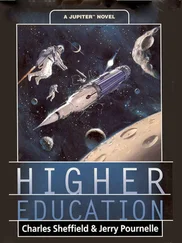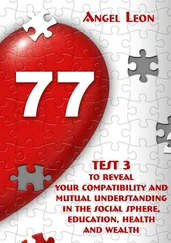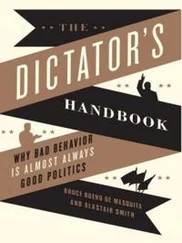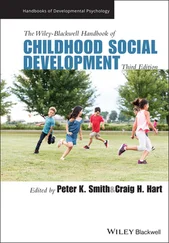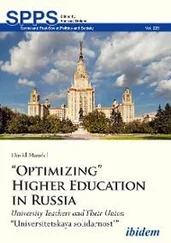The SDG on education recognizes ESD as part of Target 4.7 together with global citizenship education (GCED), which UNESCO promotes as a complementary approach. Moreover, realization of the SDG on education is crucial to the realization of the 16 other SDGs. ESD presents its learning objectives as specific cognitive, socioemotional, and behavioral learning outcomes. In short, ESD aims at equipping all individuals with the knowledge and competencies required to bring about transformation and thereby contribute to achieving SDGs. It demands the embedding of non‐formal and informal education with key cross‐cutting competencies related to sustainability in curricula in all educational institutions ranging from preschool to tertiary education.
Despite the promise with which ESD has been seen, one can also view ESD with skepticism since empirical studies on its effectiveness is scant. McKeown (2002), Scott (2015), and Kioupi and Voulvoulis (2019) point out that few studies that review learning and pedagogical practices in ESD highlight inconsistencies, incongruences, and deficits in curricula. ESD has also drawn skepticism due to the definition education is assigned in different contexts (UNESCO 2014). Similarly, “sustainable society” (Seatter and Ceulemans 2017) and “sustainability in education” are arguably vague concepts that are open to contestation (UNESCO 2012). Nonetheless, this book focuses on exploring ways of embedding sustainability in higher education by tracing current practices, challenges, and novel trends and developments. Section 1.2of this chapter reviews the existing literature on ESD by tracing its history and evolution. Section 1.3then explores the need for promoting sustainability in higher education. The book then branches out to explore its subject under four main Parts, the theme of each Part being investigated in several chapters. Drawing insights from current practices and disciplinary and pedagogical challenges, the last chapter of this book summarizes the emerging good practices in promoting sustainability in higher education as well as barriers to embedding sustainability in higher education.
Higher education for sustainable development (HESD) does not require novel inventions and four long‐standing concepts constitute the fundamental philosophy, disciplinary content and pedagogy required for ESD: liberal education, interdisciplinarity, cosmopolitanism, and civics (Sherren 2008). Drawing from existing literature, Sherren reiterates Kohlstedt's view (1997) that “education for sustainable development” is fundamentally connected to nature studies and EE. According to Sherren (2008), literature on EE and ESD for more than 30 years has emphasized “teaching and learning methodologies and the engendering of values or world views, as opposed to imparting specific disciplinary content.” She uses the two alternate terms, education for sustainability (EFS) and ESD, as synonyms. Dovers (2005, p. 9) understands sustainability in relation to a range of issues covering “resource depletion and degradation,” “pollution and wastes,” “fundamental ecological life support services,” and “society and the human condition” with a number of constituent issues that are interconnected. As Orr (1992) points out, the key goal of ESD is “ecological literacy,” which, according to him, is “a broad understanding of how people and societies relate to each other and to natural systems, and how they might do so sustainably” (p. 92). According to scholars such as Tilbury and Wortman (2004), the ESD movement displays a shift from education about the environment to an education that facilitates better stewardship of it.
Sherren argues that the future of ESD may be found in its history and in the history of EE. The approach to ESD suggested by Sherren is learning through the history of ESD and EE in order to promote the “future environment” perspective. As a solution, what is proposed is an education that enables and develops “critical thinking skills, broad and integrated contextual knowledge and the desire and capacity to apply that knowledge” (Sherren 2008). What is noteworthy is that Sherren identifies key competencies expected through HESD as the same as humanist graduate characteristics such as critical thinking, independent inquiry, problem‐solving, creativity, sensitivity, empathy, foresight, self‐expression, and broadened perspectives. Sherren further proposes a liberal, interdisciplinary, cosmopolitan, civic model of education, but also notes certain barriers to such a model. Among those barriers, Sherren first identifies the risk of overburdening staff and students with innovative pedagogical methods and relevant curricular structures, compromising on flexibility, equity, and intellectual challenge. Second, there is the impracticality of implementing values education in higher education institutions (s). On a final note, Sherren argues that the popularity of the “market model” in the higher education sector, with its vulnerability to national funding priorities and a culture of competition, makes values education challenging but not impossible.
David Orr also shares a similar perspective about HEIs and their deficiency in values education. In “What is Education For?” Orr (1991) discusses six myths about the foundations of modern education, and six new principles to replace them. In the first part of his essay, he points out how university‐educated individuals are the cause of most modern‐day issues. According to Orr, the first myth about modern education is the belief that ignorance is solvable. In Orr's perspective, “ignorance is not a solvable problem, but rather an inescapable part of the human condition.” The second myth is the belief that with enough knowledge and technology planet Earth can be managed. He debunks this myth by revealing how ignorant humans are about even the top inch of topsoil. Orr's belief is that what can be managed is only us , by which he means human desires, economies, politics, and communities. Third, he points out the myth that implies that human goodness increases as knowledge increases. Orr maintains that data is not equal to knowledge and argues that human kindness does not increase as knowledge increases because certain indigenous or vernacular knowledge is lost as certain other knowledge is discovered. The fourth myth is that we can adequately restore what we have dismantled. On this, Orr points out the grievous repercussions of compartmentalized education. He explains how modern economists lack even the most rudimentary knowledge of ecology, which eventually leads to dire consequences for human civilizations. As the fifth myth, Orr cites the notion that education gives upward social mobility, countering this by stating that “successful” people are not the most pressing issue of our times, but rather peacemakers, healers, restorers, storytellers, and lovers of every shape and form. Orr stresses the importance of “people who live well in their places, … people of moral courage willing to join the fight to make the world habitable and humane” (Orr 1991, p. 4). Finally, Orr debunks the myth that our culture represents the pinnacle of human achievement – the idea that we alone are modern and developed. Orr argues that “Communism failed because it produced too little at too high a cost,” while “capitalism failed because it destroys morality altogether” and therefore culture is not a symbol of the pinnacle of human achievement.
Orr, then, presents his propositions to rethink education. First, he states that all education is EE by which he means that all education, by and large, ought to reflect on how it impacts the environment. Second, Orr presents the principle that the goal of education is not the mastery of the subject, but of one's person. His third proposition is that knowledge carries with it the responsibility to see that it is well used in the world. Fourth, Orr maintains that knowledge is not achieved until we learn the effects of knowledge on real people and their communities. In his fifth proposition, Orr stresses the importance of “minute particulars” and the power of examples over words. On this, Orr points out the importance of exemplary faculty, administrators, and institutions who provide role models of integrity, care, and thoughtfulness. Finally, Orr suggests the use of pragmatic ways of learning and teaching and states that the way learning occurs is as important as the content of particular courses.
Читать дальше

